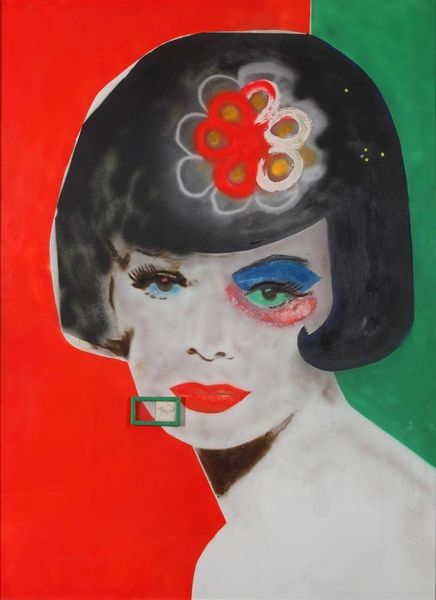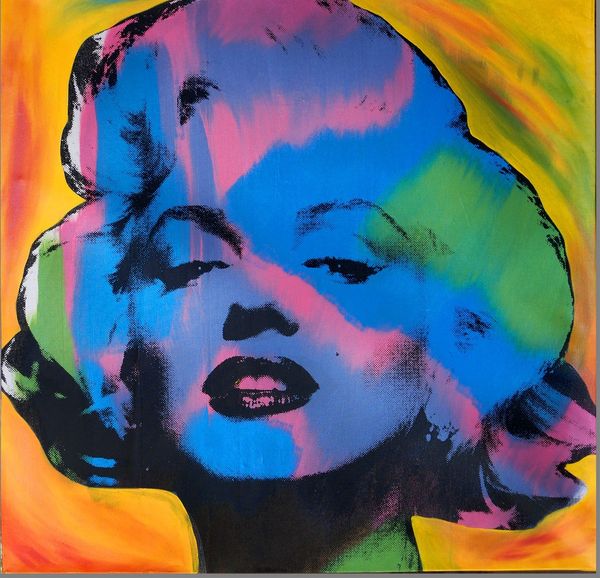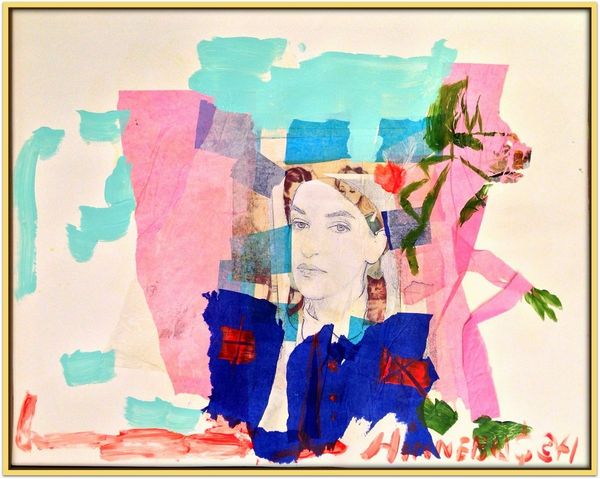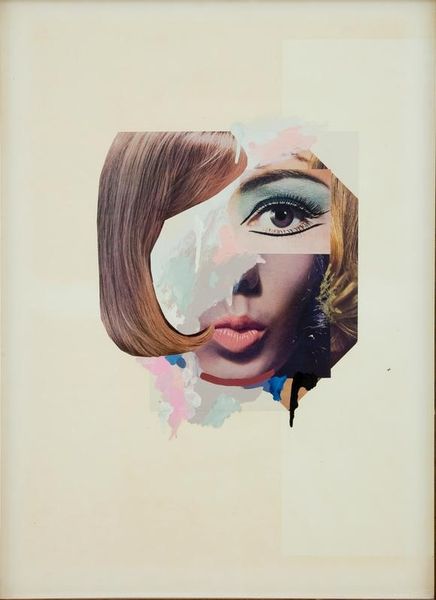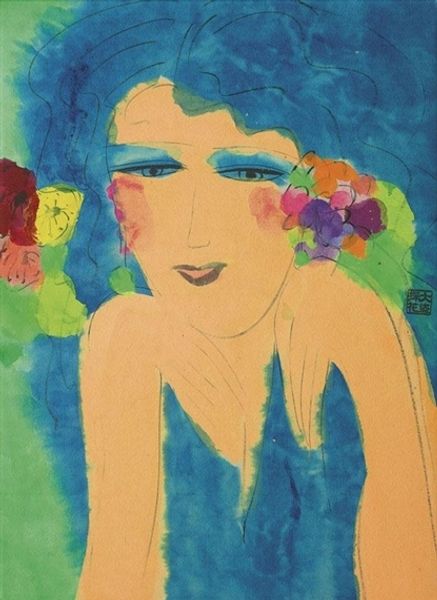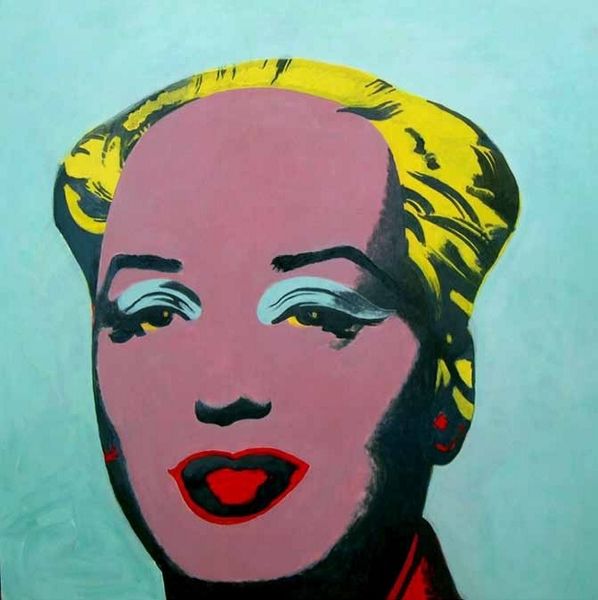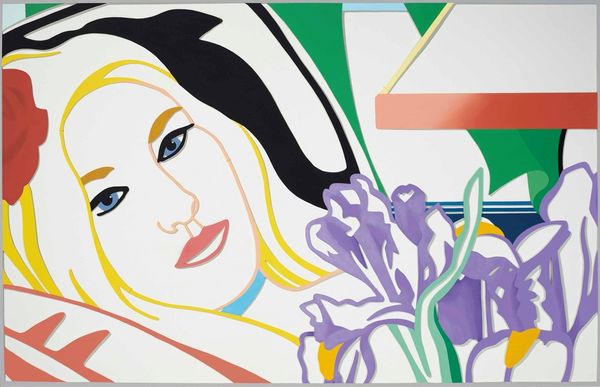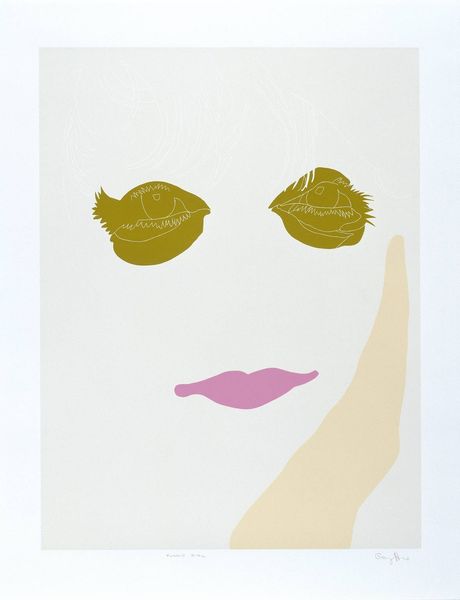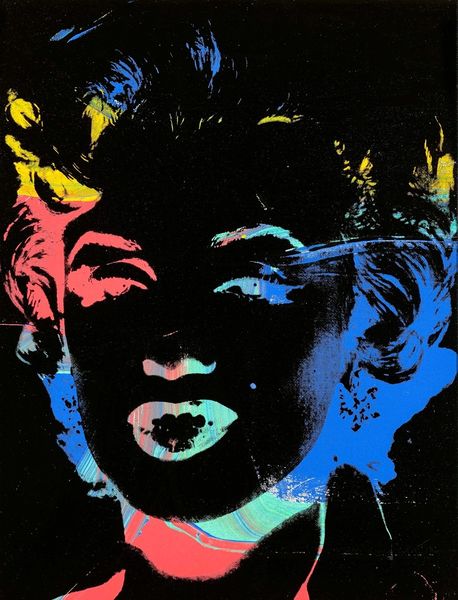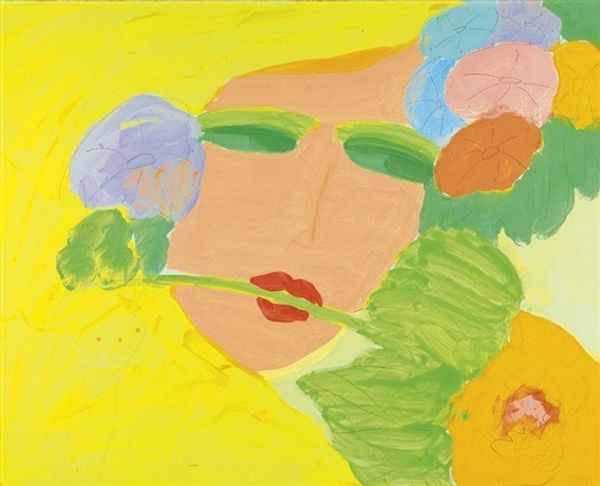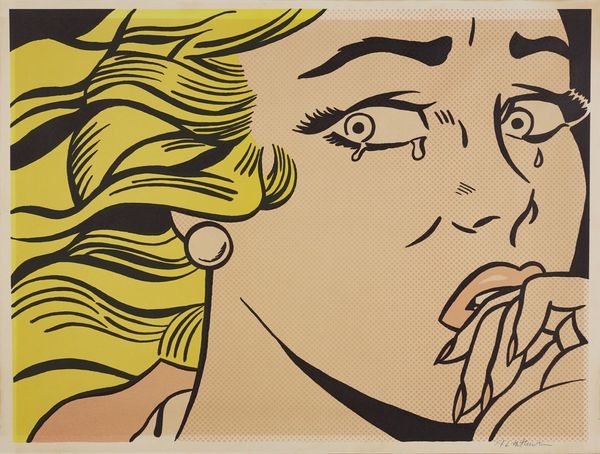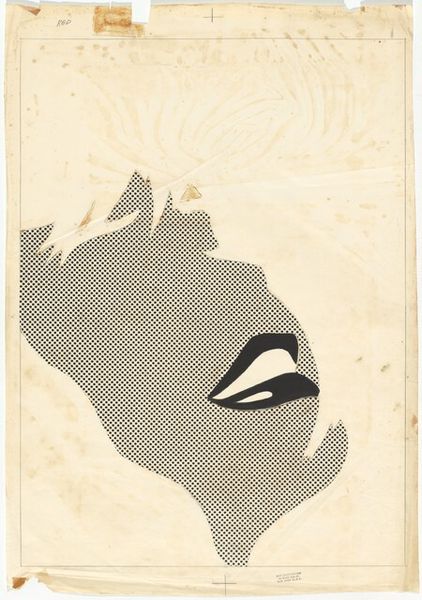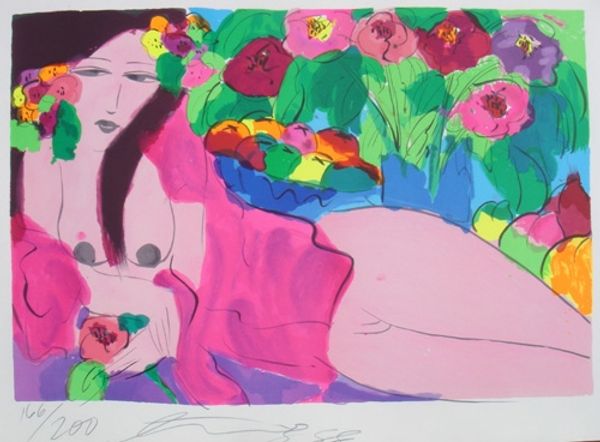
mixed-media, painting, acrylic-paint
#
portrait
#
mixed-media
#
contemporary
#
painting
#
acrylic-paint
#
pop-art
#
decorative-art
#
decorative art
Copyright: Martial Raysse,Fair Use
Curator: Martial Raysse's "Tableau presque cuvé" from 1964 certainly presents an arresting image. Editor: Indeed! My initial impression is that it possesses a vibrant, almost jarring, energy. The vivid colors and the juxtaposition of painted and actual objects create a provocative visual statement. Curator: The piece utilizes mixed media: acrylic paint and what appears to be an artificial flower affixed to the canvas. The red background pushes the stylized female portrait forward, demanding attention. Editor: Considering the time it was made, the synthetic flower placement strikes me as incredibly important. It's less about "high art" painting, and more about critiquing commodity culture, perhaps the disposable nature of beauty itself? Think of the labor, resources, and industrial processes required even to manufacture such an inconsequential item as that blossom. Curator: That is insightful. Structurally, consider how the composition plays with flatness and dimension. The painted face, rendered with bold outlines and planes of color, contrasts with the three-dimensional flower. It’s as if Raysse is questioning the very nature of representation. Editor: Right, but look closer – that flat, stylized face also reminds us of mass production. The materials used, specifically that commercially available flower, point directly at post-war consumerism and the societal pressures it applied to women in particular. There is no 'pure' artistry here: the entire composition relies on exploiting, incorporating, and drawing attention to everyday materials. Curator: There's a tension between the superficial appeal and, as you suggest, a deeper critical engagement. We can view it as a meditation on the signifiers of beauty, a deconstruction of feminine ideals prevalent at the time. Editor: It’s truly a remarkable snapshot of its era, pushing the boundaries between art object and cultural commentary by using very accessible resources. It serves to reveal the artifice and consumption at play in image creation, forcing us to question value in an expanding consumer market. Curator: A stimulating encounter, reflecting the spirit of its time. Editor: Absolutely; it is far more grounded in socio-economic issues of its time than it initially lets on.
Comments
No comments
Be the first to comment and join the conversation on the ultimate creative platform.

